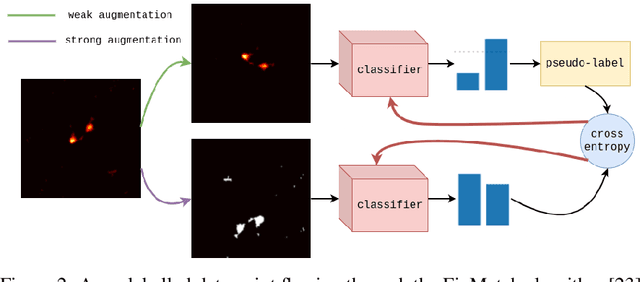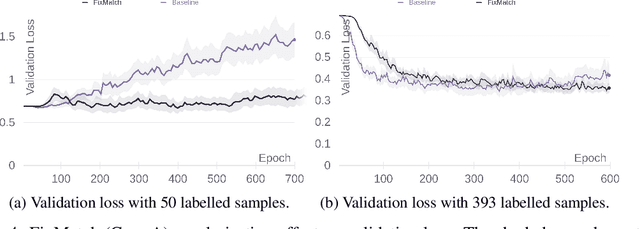Inigo V. Slijepcevic
Radio Galaxy Zoo: Using semi-supervised learning to leverage large unlabelled data-sets for radio galaxy classification under data-set shift
Apr 21, 2022



Abstract:In this work we examine the classification accuracy and robustness of a state-of-the-art semi-supervised learning (SSL) algorithm applied to the morphological classification of radio galaxies. We test if SSL with fewer labels can achieve test accuracies comparable to the supervised state-of-the-art and whether this holds when incorporating previously unseen data. We find that for the radio galaxy classification problem considered, SSL provides additional regularisation and outperforms the baseline test accuracy. However, in contrast to model performance metrics reported on computer science benchmarking data-sets, we find that improvement is limited to a narrow range of label volumes, with performance falling off rapidly at low label volumes. Additionally, we show that SSL does not improve model calibration, regardless of whether classification is improved. Moreover, we find that when different underlying catalogues drawn from the same radio survey are used to provide the labelled and unlabelled data-sets required for SSL, a significant drop in classification performance is observered, highlighting the difficulty of applying SSL techniques under dataset shift. We show that a class-imbalanced unlabelled data pool negatively affects performance through prior probability shift, which we suggest may explain this performance drop, and that using the Frechet Distance between labelled and unlabelled data-sets as a measure of data-set shift can provide a prediction of model performance, but that for typical radio galaxy data-sets with labelled sample volumes of O(1000), the sample variance associated with this technique is high and the technique is in general not sufficiently robust to replace a train-test cycle.
Can semi-supervised learning reduce the amount of manual labelling required for effective radio galaxy morphology classification?
Dec 01, 2021



Abstract:In this work, we examine the robustness of state-of-the-art semi-supervised learning (SSL) algorithms when applied to morphological classification in modern radio astronomy. We test whether SSL can achieve performance comparable to the current supervised state of the art when using many fewer labelled data points and if these results generalise to using truly unlabelled data. We find that although SSL provides additional regularisation, its performance degrades rapidly when using very few labels, and that using truly unlabelled data leads to a significant drop in performance.
 Add to Chrome
Add to Chrome Add to Firefox
Add to Firefox Add to Edge
Add to Edge